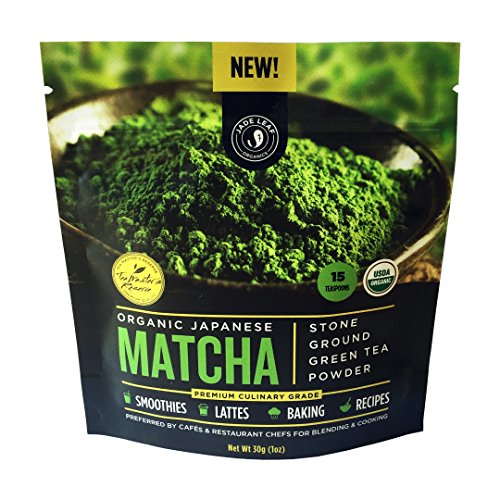
Jade Leaf – Organic Japanese Matcha Green Tea Powder, Premium Culinary Grade (Preferred By Chefs and Cafes for Blending & Baking) – [30g starter size]
FREQUENTLY ASKED QUESTIONS What grade of matcha is this, and how do I use it? This is a premium “culinary grade” matcha, preferred by restaurant chefs and cafes for blending into smoothies, lattes, baked goods, and other dishes. What’s the difference between Culinary and Ceremonial grades? Simple: Culinary grade is meant for mixing into recipes as an ingredient, while Ceremonial grade is meant to be prepared traditionally as a tea (just mixed with hot water and whisked). Culinary grade is more affordable for day to day use, making it easy to fit the health benefits of Matcha into your diet. Does it contain caffeine? Yes, each half-teaspoon (1g) serving contains roughly 34mg of caffeine, about 1/3 a cup of coffee. However, Matcha also contains L-Theanine, which has a calming and leveling affect, so it doesn’t make you feel jittery or wired like coffee does. What are other health benefits? – Boosts metabolism and helps burns calories – Calms and relaxes you from stress or anxiety – Rich in antioxidants (137x the amount in conventional green tea!) Are there other use cases for Culinary Matcha? Yes! Many of our customers make a healthy facial mask using our Culinary Grade, by mixing it with just a bit of water to form a paste. Where does this Matcha come from? Our Matcha is grown by Nagata Chaen, a single estate, organically focused family farm near the city of Uji in Kyoto, Japan. What if I don’t like it? If you are not 100% satisfied with your purchase for any reason, just email us and we’ll refund your order in full, no questions asked.

